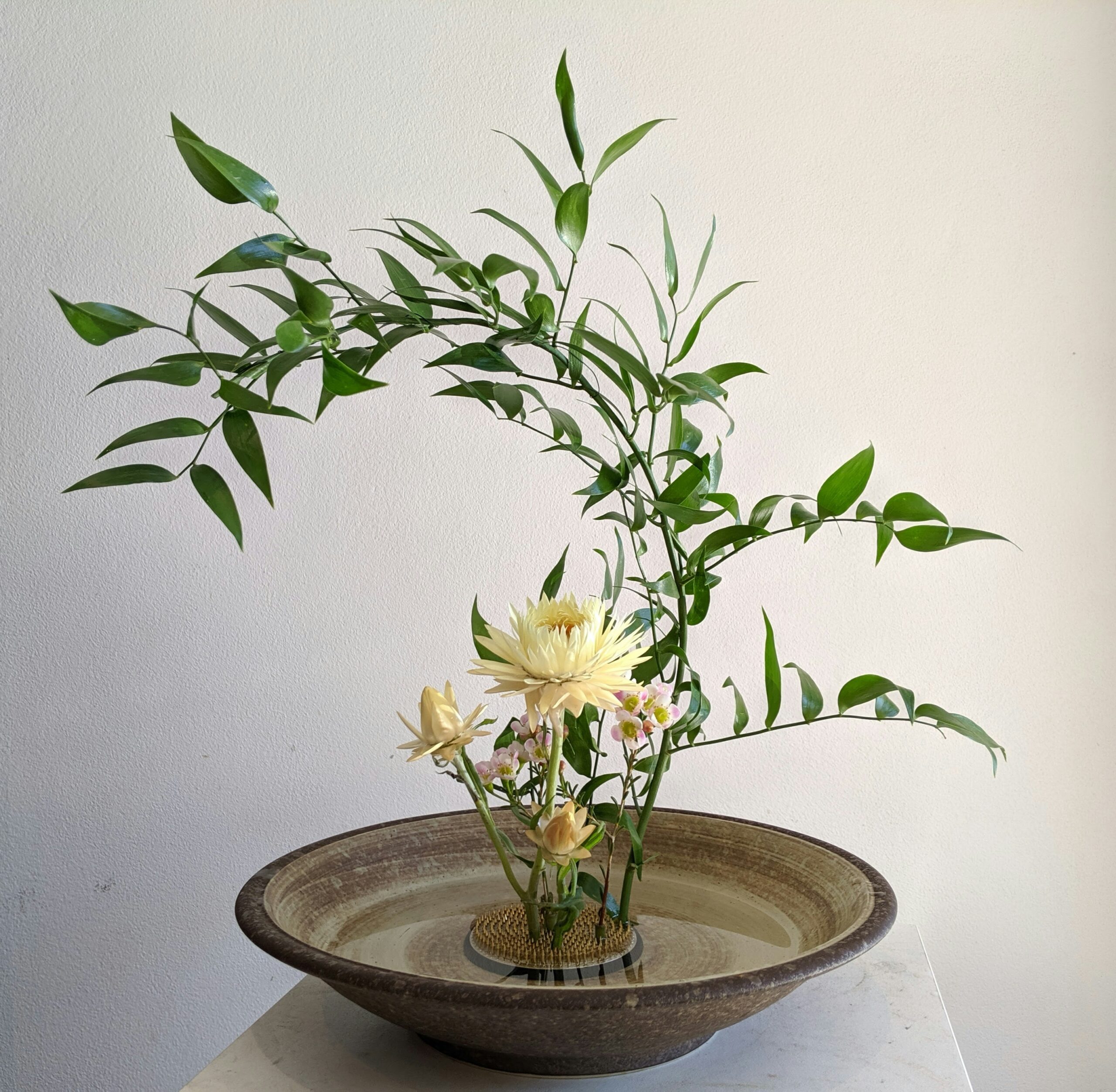Hello to all planning a trip to Japan, or those simply interested in Japanese culture! Today, we’re introducing an art form that encapsulates Japan’s profound sense of beauty: Ikebana (華道). More than just flower arranging, Ikebana is a soul-enriching experience that expresses reverence for nature, the changing seasons, and harmony with space.

What is Ikebana? – The Meaning Behind “Do” (The Way)
The word “Ikebana” literally means “the way of flowers.” The “do” (道) in Ikebana, much like in Budo (martial arts) or Sado (tea ceremony), signifies a unique Japanese concept that goes beyond mere skill acquisition. It’s about pursuing a deeper spiritual path and way of life. Ikebana, too, is not just about the technique of arranging flowers; it’s a spiritual discipline where you confront flowers, listen to the vitality of nature, and engage in a dialogue with your inner self.
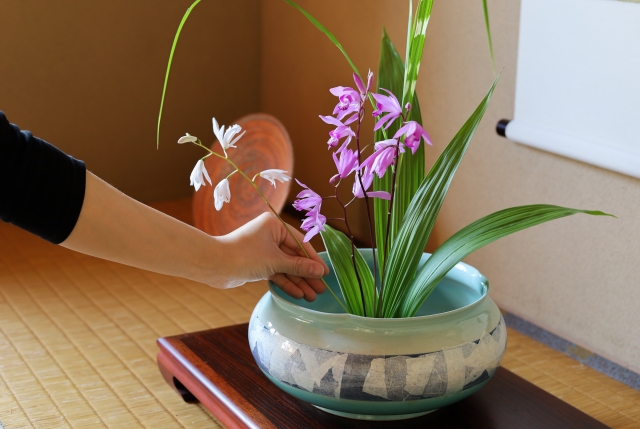
While Western flower arrangement often emphasizes maximizing the beauty of flowers, using color and volume to create a vibrant display, Ikebana is often referred to as “the aesthetics of subtraction.” Using a limited number of flowers and branches, it leverages empty space to express unseen winds, light, and the passage of seasons. The profound depth of Ikebana lies in its ability to reflect an infinite universe within a single branch or a single bloom.
History and Spirit of Ikebana – Living in Harmony with Nature
The origins of Ikebana can be traced back to the offering of flowers to Buddha, known as “kuge” (供花), which arrived with the introduction of Buddhism to Japan. During the Muromachi period (14th-16th centuries), a new architectural style called shoin-zukuri developed, and the custom of displaying flowers in an alcove called a tokonoma became widespread. It was during this time that the basic styles that would form the foundation of Ikebana were established.
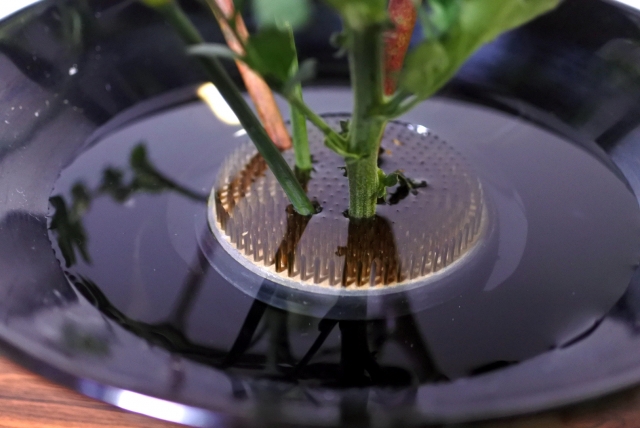
Ikebana developed in close connection with Japan’s natural environment. For Japanese people, who have lived surrounded by rich nature with distinct seasons, flowers and plants are not just decorations. They evoke feelings of life’s cycles, impermanence, and reverence for nature. Through Ikebana, the Japanese have fostered a spirit of becoming one with nature and finding beauty within it.
Why an Ikebana Experience is Highly Recommended Now
Participating in an Ikebana experience during your trip to Japan offers numerous benefits:

- Experience Japanese Aesthetics with All Five Senses: The scent of flowers, the feel of branches, the texture of the vase, and the quiet beauty of the finished arrangement. You can fully immerse yourself in Japan’s delicate sense of beauty using all five senses.
- Deeper Cultural Understanding: Gain a profound understanding of Japan’s history, spirituality, and culture deeply rooted in people’s lives—something you can’t get just by visiting tourist spots.
- A Mindful Moment: The time spent focusing on and engaging with flowers offers a mindful experience, allowing you to step away from daily hustle and calm your mind.
- Expression of Creativity: While receiving guidance from the instructor, arranging flowers with your own sensibility allows you to discover the joy of new creative expression.
- Unique Memories and Photos: Your self-arranged creation will be an unforgettable memory and a wonderful photo to share with friends and family.
Tips for Making the Most of Your Ikebana Experience
An increasing number of schools and facilities across Japan offer Ikebana experiences. Many provide instruction in English, so you can participate with confidence.
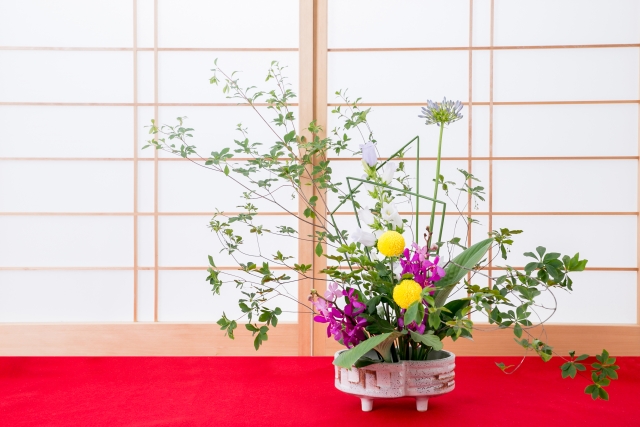
- Research Schools (Ryūha): There are various schools of Ikebana, with prominent ones including Ikenobo (池坊), Sogetsu-ryu (草月流), and Ohara-ryu (小原流). Each school has its unique characteristics, but for introductory lessons, you’ll typically learn basic arrangements, so you don’t need to worry too much. If you’re interested, researching them beforehand can be fun.
- Types of Trial Lessons: Tourist-oriented trial lessons usually last 1 to 2 hours and teach basic flower handling, tool usage, and simple arrangement techniques. Most places allow you to participate empty-handed (with no need to bring your own tools or materials).
- Attire: No special clothing is required, but comfortable clothes that you don’t mind getting a little dirty are recommended. Be aware that long sleeves might get in the way of arranging.
- Don’t Be Afraid to Ask Questions: Instructors want you to enjoy Ikebana. Don’t hesitate to ask questions if something puzzles you or if you want to learn more.
- Taking Your Creation Home: Some places allow you to take your arranged flowers home, but carrying them while traveling might be difficult. It’s a good idea to confirm this beforehand.
Conclusion: A Unique Floral Dialogue Only in Japan
An Ikebana experience is a wonderful opportunity to open the door to Japanese culture. Seriously engaging with flowers and branches, feeling their vitality, and expressing your inner sense of beauty. This unique experience will undoubtedly make your trip to Japan deeper and richer.
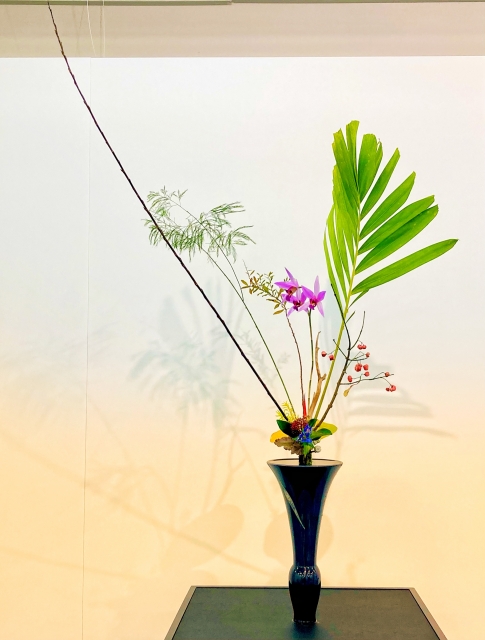
So, why not spend some enriching time in Japan, engaging in a dialogue with flowers? We hope you discover new insights and emotions in the world of Ikebana.

